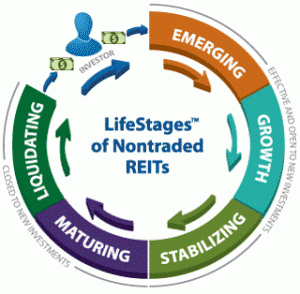John Hancock Investment Management
Global aviation has rebounded dramatically since the dark days of the pandemic—a time when travel restrictions essentially choked off passenger traffic. The current backlog for two major original equipment manufacturers (OEMs) amounts to more than eight years of production,¹ with order books growing due to overall bullishness from many of the world’s airlines. We weigh in on some recent aviation investment trends and examine what this means for investors.
Air travel’s long-term growth potential, alongside the effectiveness of new technology aircraft, is driving demand from many of the world’s largest airlines that anticipate massively expanding their businesses over the next decade plus due to high air travel demand.
In our view, this backlog has created attractive investment opportunities in aviation investing. A chronic undersupply of narrow-body jets could drive up existing fleet values and support robust lease rates, benefiting current lessors―developments that could potentially make aircraft ownership and leasing very attractive investments.
Aircraft delivery challenges explained
Air travel has rebounded dramatically since the pandemic, pulling demand for aircraft through the supply chain and straining traditional financing sources. The International Air Transport Association reports that passenger traffic globally has increased more than 36% from 2022 to 2023. U.S. daily air traffic has recently surpassed the two million passengers a day mark, and global traffic has reverted back to 94% of prepandemic levels.
We believe leisure travel growth; global growth of the middle class, particularly in emerging markets; urban migration; and the attendant investment in aviation infrastructure have created additional tailwinds for continued strong aircraft demand. Leisure travel bounced back to near pre-COVID-19 levels within approximately one year in jurisdictions with open-air travel and continued to skyrocket, even as fares continued to climb. Going forward, travel and tourism GDP is predicted to grow, on average, at 5.8% a year between 2022 and 2032, outpacing the growth of the overall economy at an expected 2.7% a year.
The expanding middle class presents a massive untapped opportunity for air travel. According to the World Economic Forum, Asia’s middle class could rise from 54% of the global middle class in 2020 to 65% by 2030. Last June, Boeing estimated that the global middle class will grow by more than 500 million people through 2040 and that more than 32,000 new and replacement narrow-body jets will be needed to carry them. According to Airbus, more than 23,000 new passenger and freighter aircraft will be needed in the next 20 years, in addition to 17,000 replacement aircraft.
This, in combination with hundreds of millions of people moving to cities and, therefore, closer to airports, further supports current lessors and future aviation investment. The World Bank estimates that by 2050, the world’s urban population will more than double from its current 4.4 billion. We believe that rising urbanization will lead to greater access to airports and more demand for air travel. More and bigger airports mean more airplanes to service them. For example, Istanbul’s new airport (service began in 2019) ranks among the world’s top five largest airports and can service 200 million passengers annually. Its predecessor, Atatürk Airport, had an annual capacity of 60 million passengers. Given the massive expansion of the capital’s airport, it should be no surprise that in 2023, Turkish Airlines announced an order for more than 200 new Airbus planes (the majority were narrow-body jets).
On the supply side, the two major OEMs collectively delivered 723 and 951 aircraft in 2020 and 2021, respectively; by comparison, they delivered 1,606 and 1,243 commercial jets in 2018 and 2019, respectively.² Labor shortages and engine recalls have only added to manufacturers’ woes. Given the current eight-year backlog of deliveries, it’s our view that endemic supply chain constraints will result in a permanent shortfall in narrow-body planes of 3,000 to 3,500. Our calculations shows this permanent shortfall represents approximately 30% of annual average deliveries prior to COVID-19. This imbalance in supply and demand is, in our view, likely to elevate values of virtually all aircraft, whether current or next-generation technology.
The industry is experiencing aircraft delivery challenges
Narrow-body production, actual vs. planned
Source: Boeing, Airbus, ch-aviation, Visual Approach Analytics, Marathon Asset Management, LP, as of August 2023. Order book estimates assume production of 45 planes per month for Boeing and 70 planes per month for Airbus, in line with pre-COVID-19 production estimates.
To lease or not to lease?
The global commercial aircraft leasing market, according to some estimates, is forecast to grow from roughly $155 billion in 2023 to over $315 billion in 2033. The constrained availability of aircraft, high financial commitment associated with owning equipment (including financing costs), and flexibility all play a role. With regard to the latter, airlines may find leasing arrangements favorable as they allow for more options to adjust fleet capacity in accordance with demand. The leasing option also gives airlines the ability to replenish their fleet at the end of lease terms, allowing them to benefit from newer aircraft with more advanced technology. Given the lessons learned over the pandemic, many airlines are looking to cut operating costs, deleverage, and better manage short-term liquidity.
Additionally, structural shifts in demand (recession or another public health crisis), geopolitical risks, and higher labor or fuel costs are some other risks an airline may want to mitigate by deferring the purchase of an aircraft.
Why consider aircraft leasing?
Examining some of the key reasons airlines opt for leasing
Source: Marathon Asset Management, LP, 2024. For illustrative purposes only.
Investment opportunities unlocked
Aviation finance, a subset of private credit in the form of aircraft and engine leasing, allows investors to tap into the opportunities created by the supply-and-demand imbalance discussed above. Institutional investors have been investing in aircraft leasing for decades, and broader sets of investors can now complement their traditional portfolios with alternative yield sources and potential enhanced diversification benefits generated by aircraft leasing through registered alternative funds that invest in the space.
Highlighting the key pillars of aircraft leasing
There are several reasons why we believe aircraft leasing deserves investor attention. Aircraft leasing, which typically lasts between 4 and 12 years, can potentially provide a steady stream of lease payments that may be viewed as a regular source of cash flow to investors. The cash yield and overall return profile of aircraft leasing offer what we would consider to be a more attractive risk-adjusted returns relative to similar investment alternatives. Based on market data, the yield on a typical aircraft lease investment is approximately 11%. Meanwhile, comparable investments such as enhanced equipment trust certificates, loyalty programs, and slots, gates, and routes-backed debt―barring the odd exception―are mostly yielding between 5% and 8%, depending on the tranche and counterparty credit.3 Aircraft leasing has a low correlation with fixed-income and other traditional investments such as stocks and real estate, meaning it has the potential to bring about diversification benefits and offer investors downside protection. The constraint in new aircraft supply amid rising demand for air travel suggests that, as a physical asset, aircraft are likely to retain their value.
“The recent resurgence in passenger traffic, coupled with long-term tailwinds for air travel demand, should continue to bode well for aircraft leasing investments.”
Understanding risks associated with aircraft leasing
As with many alternative investment vehicles, aircraft leasing may not suit all investors. Investing in aircraft leasing is quite different from investing in your traditional stocks and bonds. Investors need to be mindful that aircraft leasing investments may be less liquid; therefore, the lower correlation and the liquidity premium. Factors such as airline creditworthiness, the reliability of lease payments over time, and ongoing costs associated with aircraft ownership should also be considered.
Looking ahead
The recent resurgence in passenger traffic, coupled with long-term tailwinds for air travel demand, should continue to bode well for aircraft leasing investments. An expansion of the middle class, growth in emerging-market economies, urban migration, and global investment into aviation infrastructure are―in our opinion―forces that are firmly in place to sustain this demand going forward. We believe the aircraft leasing space could appeal to investors seeking to growth their wealth and diversify their portfolios through less conventional routes.
1Centre For Aviation, January 2024. 2Defense And Security Monitor, January 2020. 3Bloomberg, Marathon Asset Management, LP, April 2024.
Diversification does not guarantee a profit or eliminate the risk of a loss.
This material is for informational purposes only and is not intended to be, nor shall it be interpreted or construed as, a recommendation or providing advice, impartial or otherwise. John Hancock Investment Management and our representatives and affiliates may receive compensation derived from the sale of and/or from any investment made in our products and services.
The views presented are those of the author(s) and are subject to change. No forecasts are guaranteed. This commentary is provided for informational purposes only and is not an endorsement of any security, mutual fund, sector, or index. Past performance does not guarantee future results.











